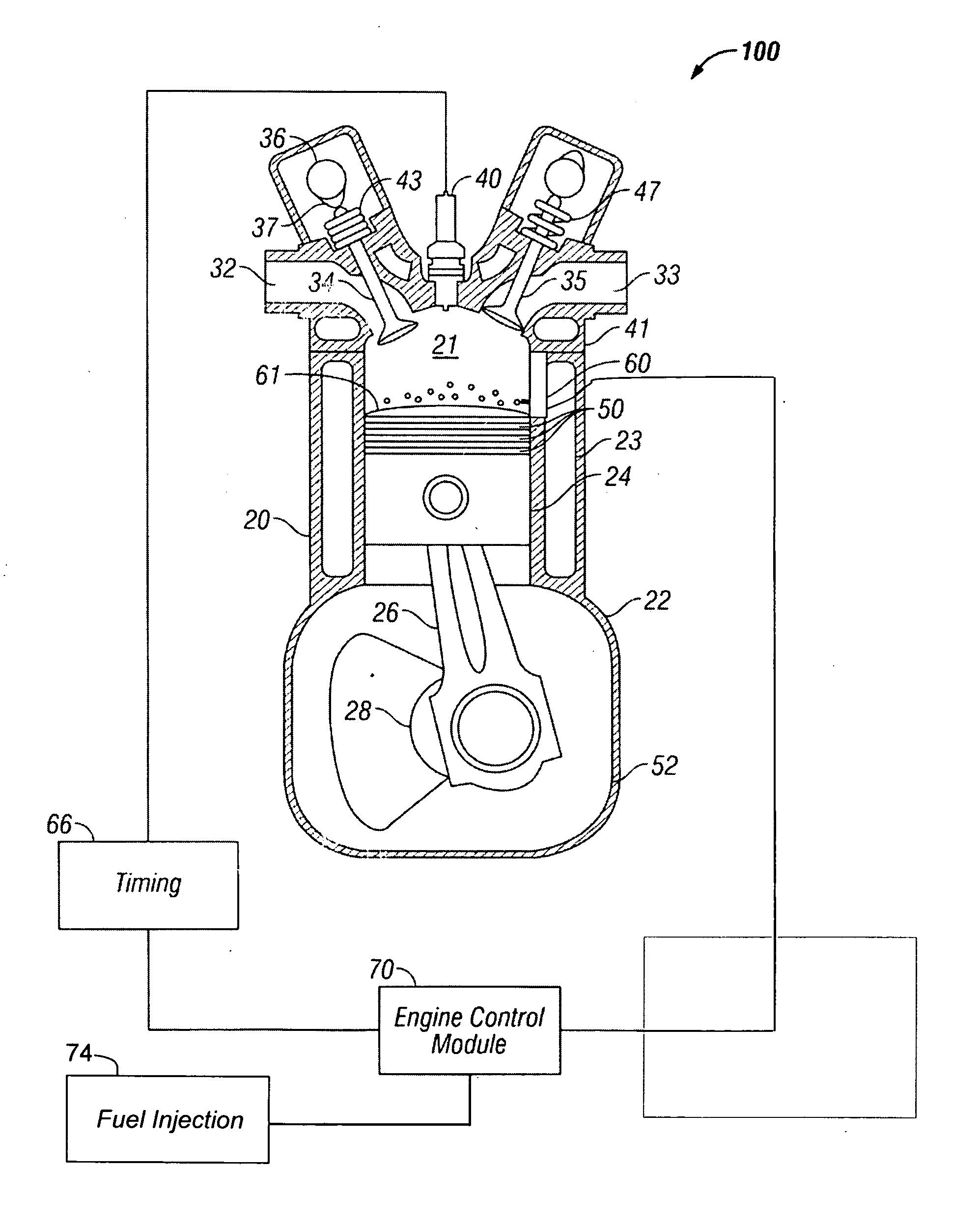Methods of detecting pre-ignition and preventing it from causing knock in direct injection spark ignition engines
- Summary
- Abstract
- Description
- Claims
- Application Information
AI Technical Summary
Benefits of technology
Problems solved by technology
Method used
Image
Examples
Embodiment Construction
[0012]The particular values and configurations discussed in these non-limiting examples can be varied and are cited merely to illustrate at least one embodiment and are not intended to limit the scope thereof.
[0013]With reference to FIG. 1 a spark ignition engine according to a first embodiment of the invention is shown and denoted generally as 100. Engine 100 includes a cylinder 20 coupled to crankcase 22. A piston 24 travels up and down within the combustion chamber 21 of cylinder 20 and is connected to a crankshaft 28 via a piston rod 26. The cylinder 20 is attached to the crankcase 22 which houses the crankshaft 28. The underside of the piston 24 and the crankcase 22 forms a crankcase volume that will vary as the piston 24 moves up and down within the combustion chamber 21.
[0014]Engine 100 is supplied an air / fuel mixture through intake passageway 32. The air / fuel mixture is supplied to the combustion chamber 21 by the operation of intake valve 34 which, in turn, is opened and cl...
PUM
 Login to View More
Login to View More Abstract
Description
Claims
Application Information
 Login to View More
Login to View More - R&D
- Intellectual Property
- Life Sciences
- Materials
- Tech Scout
- Unparalleled Data Quality
- Higher Quality Content
- 60% Fewer Hallucinations
Browse by: Latest US Patents, China's latest patents, Technical Efficacy Thesaurus, Application Domain, Technology Topic, Popular Technical Reports.
© 2025 PatSnap. All rights reserved.Legal|Privacy policy|Modern Slavery Act Transparency Statement|Sitemap|About US| Contact US: help@patsnap.com



